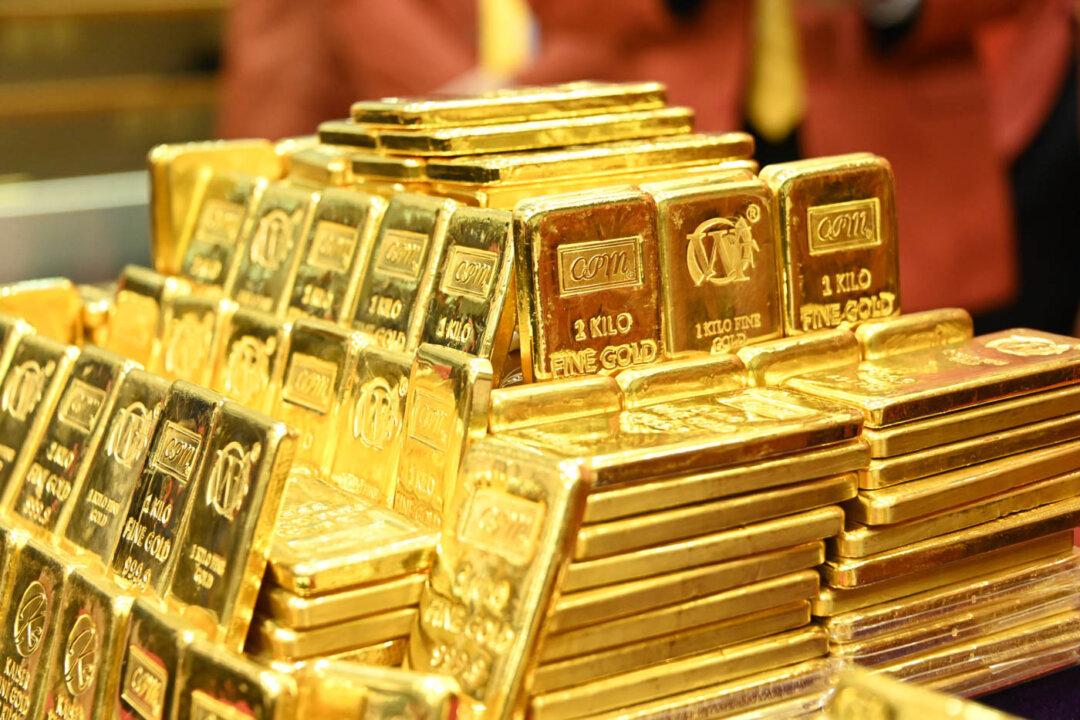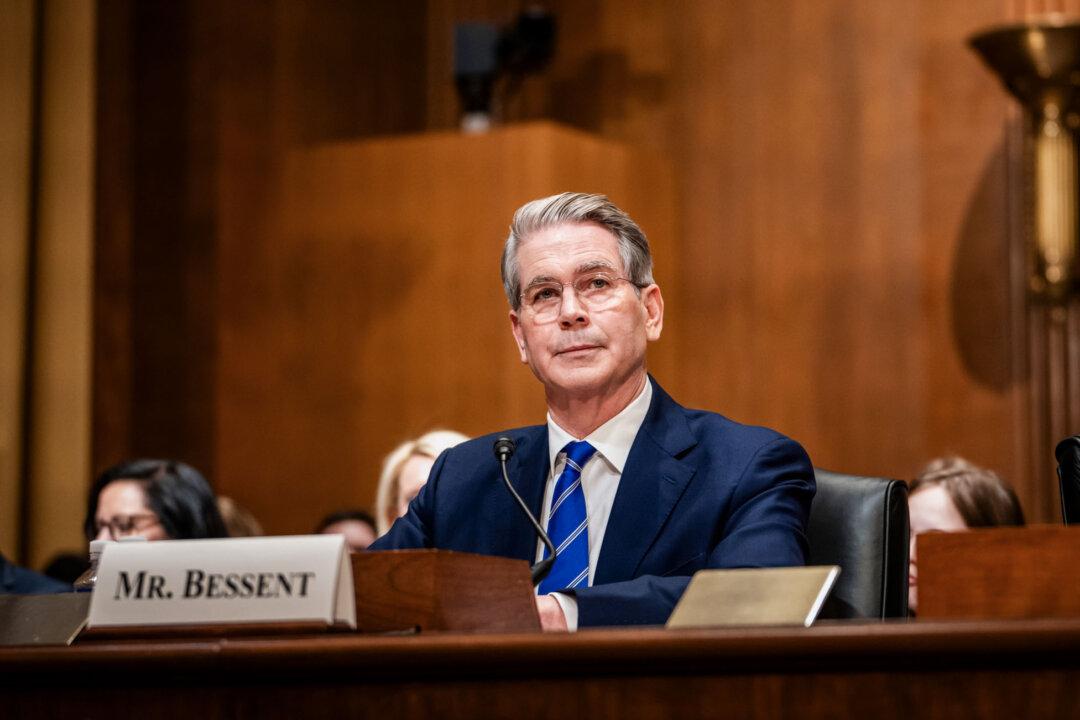Gold prices topped $2,500 for the first time, and the yellow metal remains one of the top performing assets in the global financial markets this year, buoyed by a wide range of factors.
December gold futures, the most active contract, rocketed by $53.80, or 2.16 percent, to $2,546.20 per ounce on Aug. 16 on the New York Mercantile Exchange.
The precious metal registered a weekly gain of slightly more than 3 percent, adding to its year-to-date rally of nearly 23 percent. Over the past 12 months, gold prices have spiked by close to 33 percent.
Silver, the sister commodity to gold, also firmed above $29 to end the trading session. September silver futures climbed by $0.667, or 2.35 percent, to $29.085 an ounce.
Federal Reserve Policy Expectations
According to the CME FedWatch Tool, investors widely expect the Federal Reserve to announce a quarter-point interest rate cut at next month’s policy meeting. Traders are also penciling in one more rate reduction before the year’s end.The widely anticipated Fed pivot has resulted in sliding U.S. Treasury yields.
The benchmark 10-year yield has been trending downward since the end of April, slipping below 4 percent earlier this month. The 2- and 30-year bond yields have also targeted 4 percent.
Gold is sensitive to fluctuations in interest rates because it influences the opportunity cost of holding non-yielding bullion.
The greenback has also become a victim of the central bank’s expected loosening of monetary conditions.
Over the past month, the U.S. Dollar Index (DXY), a gauge of the U.S. dollar against a basket of currencies, has tumbled by nearly 2 percent to below 103. Year-to-date, it is up by 1 percent, although the index had been up by as much as 4.8 percent.
A weaker greenback is good for dollar-denominated assets, such as gold and silver, because it makes them cheaper for foreign investors to purchase.
Before August’s conclusion, the financial markets will pay attention to the minutes from the July policy meeting and Fed Chair Jerome Powell’s speech at the 2024 Jackson Hole Economic Policy Symposium in Moran, Wyoming.

An Eye on Geopolitics
Investors have sought shelter in the yellow metal amid geopolitical strife, particularly the situations in the Middle East and Eastern Europe.International markets fear that an attack by Iran on Israel is nigh and could trigger a wider conflict. Although there have been ongoing talks that could prevent Tehran from retaliating against Israel, negotiations have stalled.
The Ukrainian military launched an offensive into Russia’s Kursk region as both sides continued to engage in a deadly conflict.
Geopolitical uncertainty could further fuel safe-haven demand and support gold prices in the short to medium terms, according to Manthey.
Politics and Central Banks
Central bank gold demand has been strong this year, according to fresh data from the World Gold Council.While demand was lower from April to June than in previous three-month spans, the 183 tons purchased by central banks in the second quarter were 6 percent higher year over year.
Net buying in the first half of 2024 totaled 483 tons, 5 percent above the previous record of 460 tons in the first half of 2023.
The trend is expected to persist throughout 2024, according to the industry group.
“Based on the first half of the year, and the findings from our survey, we maintain our expectation that central banks will remain significant net purchasers throughout 2024,” the report states. “On current form, central banks appear on course for another sizeable annual total, but it remains to be seen whether this will match or exceed the volumes of the previous two years.”
There are many reasons why central banks would be interested in gaining exposure to gold, such as safety, portfolio diversity, long-term store of value, and a paucity of default risk.
Additionally, following Russia’s invasion of Ukraine, the United States and its allies installed tough sanctions on Moscow that isolated the country from the international financial community. As a result, the Bank of Russia and its counterparts have shifted some of their reserve assets away from the dollar and into gold.
Uncertainty surrounding the November presidential election could also influence gold’s direction.
“Elections have not, historically, had a significant or immediate effect on gold’s performance but regardless of the winning candidate, near-term geopolitical risks remain high and may serve as a catalyst for gold.”







